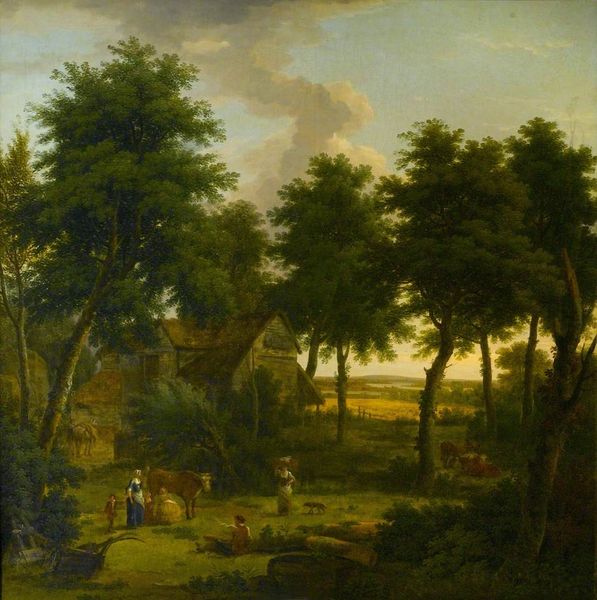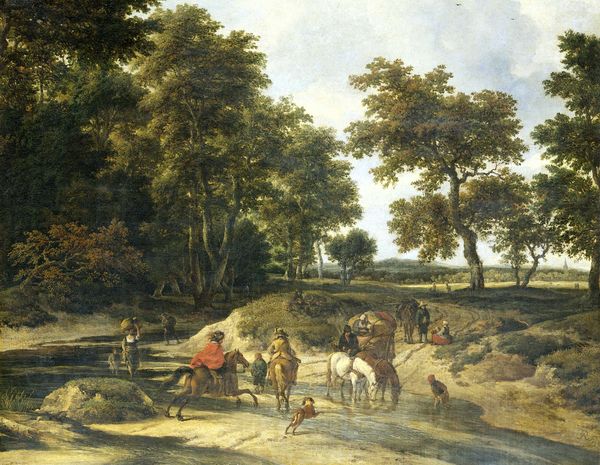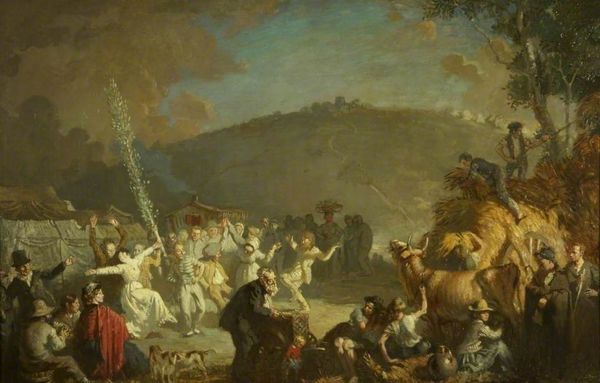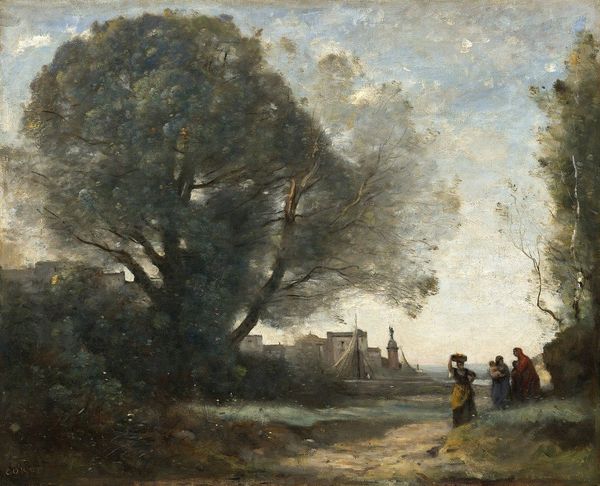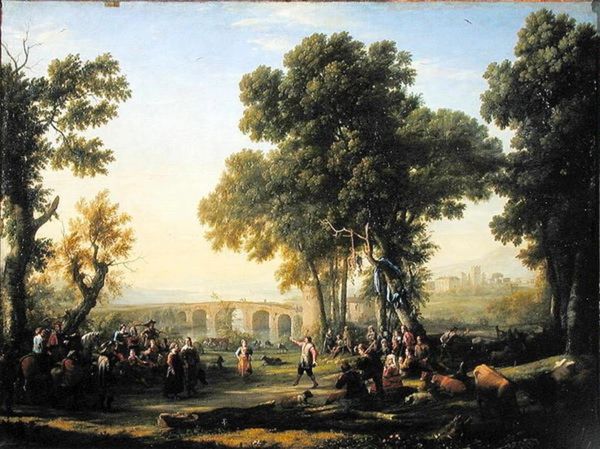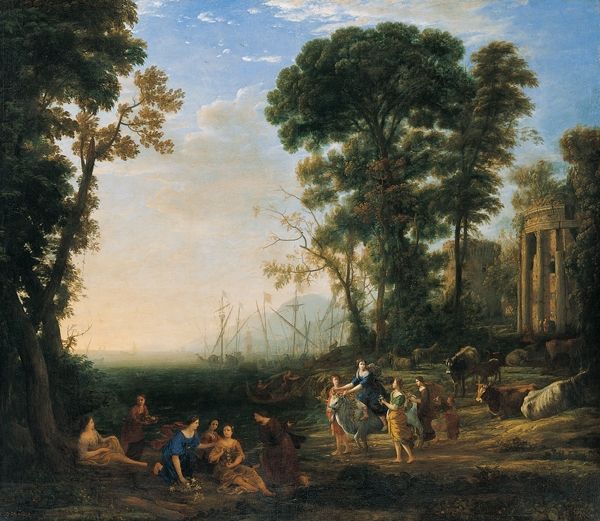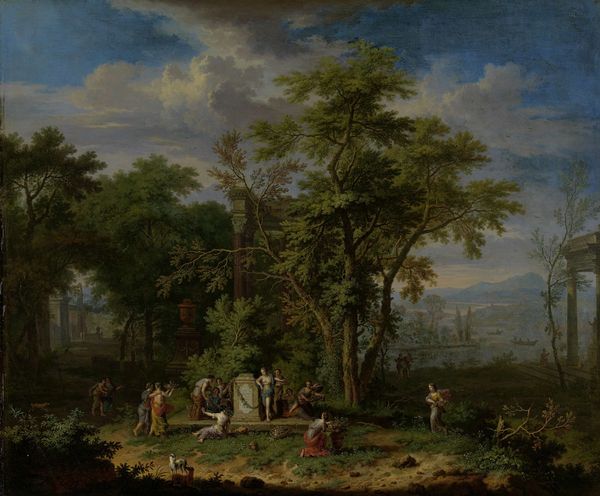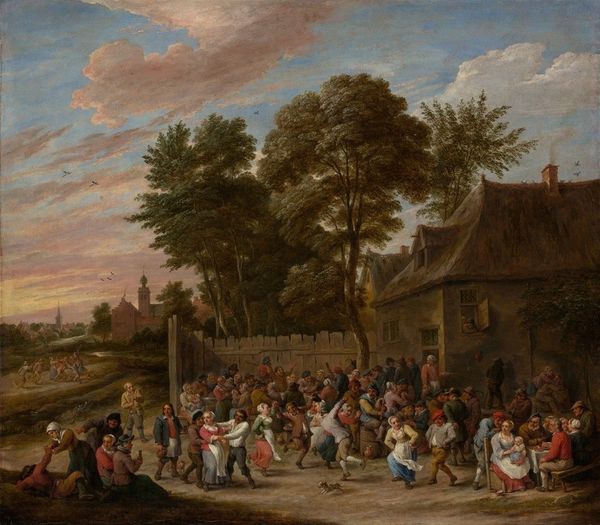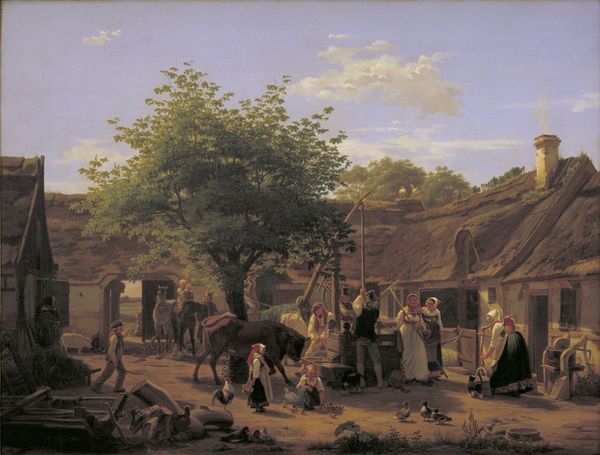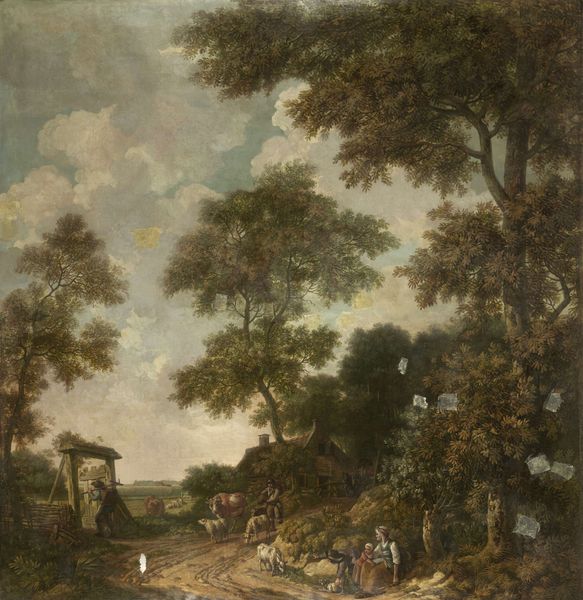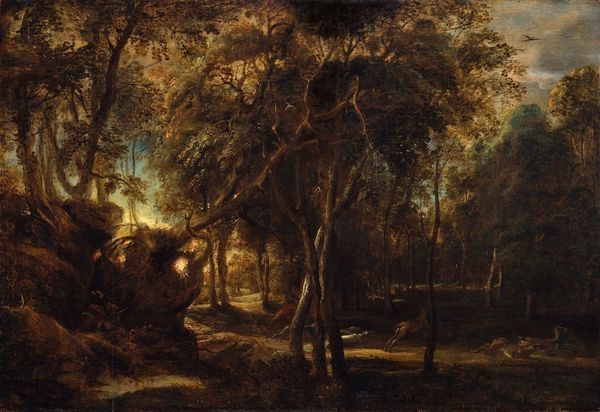
painting, plein-air, oil-paint
#
painting
#
plein-air
#
oil-paint
#
landscape
#
charcoal drawing
#
romanticism
#
painting painterly
#
cityscape
#
realism
Copyright: Public domain
Curator: I’m struck by the muted palette of this street scene. It's bustling, certainly, but somehow melancholic, wouldn’t you agree? Editor: Indeed. It's a piece titled "Boulevard des Italiens, Paris" attributed to John Crome and painted circa 1815. Crome's rendition provides insight into daily life in the heart of post-Napoleonic Paris, just as Europe was attempting to redefine itself. Curator: The Romantic leaning in this realism has always interested me: it captures that sense of transience. Even though it seems ordinary on first viewing, note the composition’s subtle evocation of time passing. Consider all of the symbols of abundance—flower stalls, vendors with goods—that are mixed with a more subtle current of ephemerality. The muted tones certainly reinforce this feeling. Editor: Yes, the visual language presents some very powerful oppositions: nature—the unruly trees—intertwined with architecture that conveys social status. There's a negotiation between the established order and organic development. I also think it offers commentary on the reestablishment of normalcy in post-revolutionary, and now post-Napoleonic, France. What do you notice about its engagement with a "street view," exactly? Curator: Good question! Look how Crome flattens the perspective; the crowds fade almost seamlessly into the architecture. We, the viewers, are also present but almost anonymous—observers in a moment both fleeting and permanent. This tension, that balance, lends such gravity to Crome's seemingly informal composition. Also, that particular area of the city operated at that moment as an entrepôt of commerce, leisure, and social gatherings, very relevant details if we look for the relationship between economy, society, and politics of Paris at that specific time. Editor: So true, that is probably one of the reasons why Crome decided to capture it for future viewers. The visual and iconographic language transmits the spirit and the ethos of an age where Romantic and realistic sensibilities merge! It gives a rich vision of both ordinary life and those overarching socio-political influences which formed an indelible part of that particular age! Curator: Well, looking closer, this certainly inspires a reflection on the public role of art and the relationship with our socio-political awareness. Editor: It really invites one into the world of symbolism embedded within urban everyday life, that helps us reflect on our own contemporary dynamics and our continuous interplay with visual culture.
Comments
No comments
Be the first to comment and join the conversation on the ultimate creative platform.
